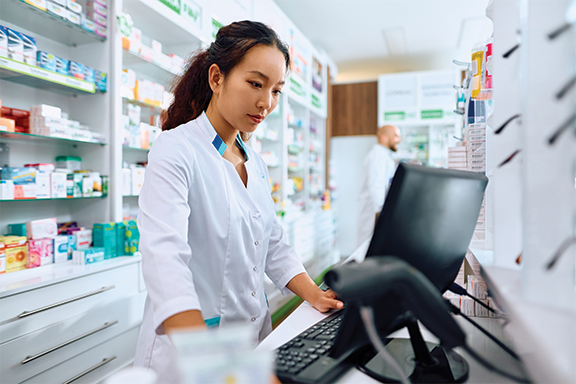
The human element of healthcare means that mistakes can and will happen, no matter how careful we are. In pharmacies, this often results in accidental (or sometimes intentional) medication errors. Every pharmacy has medication errors, but not all are recording them. This needs to change. Consistently recording all mistakes and near-misses (aka good catches) is the most effective way to learn from errors to prevent them from happening again.
It’s also important to remember that more recordings does not mean the pharmacy is unsafe; rather, it means the pharmacy is aware and documenting as many events as possible to identify the trends.
Regular reporting gives us the data we need to determine contributing factors, so we can make proactive improvements that will limit the risk of it reoccurring. Here are five ways that medication incident reporting can help improve pharmacy safety.
1. Identify problems earlier
When reporting medication errors/incidents and near-miss events, pharmacists and healthcare workers can easily review the data collected to identify patterns and trends in the errors. For example, are there repeated problems with specific medications or errors happening at a similar time of day? Analyzing the data helps pinpoint issues and enables us to take proactive action to prevent an incident before it happens again. By identifying problems earlier, pharmacists can develop an evidence-based approach to pharmacy safety.
2. Improve communication
Medication incident reporting helps improve communication amongst pharmacy staff, which is essential in preventing errors. When incidents are documented, it presents an opportunity for staff to discuss areas where improvements can be made. Open, transparent communication helps build a just culture, where mistakes are treated as learning opportunities, not opportunities to assign blame. Employees feel safe discussing incidents and good catches, knowing the ultimate goal is improving the overall safety of the pharmacy.
3. Enhance processes and training
Regularly reporting medication incidents and near-misses gathers the data needed to help pinpoint process errors or gaps in training programs where improvements can be made to enhance safety. For example, are errors frequently occurring after employees get distracted answering phone calls? Could processes be improved by assigning one employee to handle all incoming calls so that others can remain focused on their work? This approach to education and training can be more effective, as it targets specific areas of need rather than a generalized approach.
4. Create a culture of safety
When reporting medication errors and near-miss events into Pharmapod, employees gain a clear line of sight from reporting to actions necessary for improvements. Knowing their efforts are directly impacting processes and patient safety provides a strong sense of purpose and motivates employees to look for additional areas where safety improvements can be made.
5. Meeting regulatory requirements
Medication incident reporting is a regulatory requirement in many areas. Reporting into a platform like Pharmapod makes the process easy for staff and ensures all relevant information is captured. Comprehensive data and reports can be generated in a few clicks to provide to regulatory authorities when needed, ensuring your pharmacy is in full compliance.
+ + +
Ready to improve safety in your pharmacy, long-term care home, or healthcare setting? Request a demo today to discover how Pharmapod simplifies medication incident reporting, reduces risk, and enhances pharmacy efficiency.
Share this Article
Recent Articles
Why More Medication Incident Reports Indicates a Safer Pharmacy Environment
It’s a common misconception in pharmacies that having many medication incident reports indicates the pharmacy environment is unsafe. Actually, the opposite is true. The more
On-Demand Webinar: Pharmapod Safety Series – Creating Your Own Safety Net
From drug shortages to high volumes of walk-in traffic, environmental distractions are unavoidable in pharmacies – but they’re also the #1 contributing factor to medication
Think Research’s Pharmapod Adopted in University and Colleges Across Canada to Teach Foundations of Medication Safety
TORONTO, ON – February 27, 2024 – Think Research Corporation (TSXV: THNK) (“TRC” or the “Company“), a company focused on transforming healthcare through digital health



